In today’s world of food delivery apps, organic groceries, and viral recipes, it’s easy to forget there was a time when dinner wasn’t about flavor or choice—it was about survival. The 1960s were a decade of immense cultural change, but for many working-class and poor families across America, mealtime was a daily reminder of just how tight things really were.
This wasn’t a time of abundance for everyone. Many families lived paycheck to paycheck—if they had a paycheck at all—and made do with whatever they could stretch, mix, or scrape together from the pantry.
Processed meats, canned goods, government cheese, and starchy fillers were the building blocks of survival. Mothers became masters of resourcefulness, turning the bare minimum into something that could warm a child’s belly, even if it couldn’t satisfy a craving.
Some of these meals became beloved out of necessity—simple dishes like beans on toast or rice and beans that still trigger memories of childhood comfort. Others, like mayonnaise sandwiches or ketchup spaghetti, are remembered with a wince and a shake of the head. But every single one of these meals tells a story. A story of struggle. Of family. Of doing the best you could with what little you had.
These aren’t just recipes—they’re cultural time capsules, cooked up during a decade when food was more about filling empty stomachs than impressing guests. And while some of these dishes may seem depressing or even bizarre today, they once represented ingenuity, sacrifice, and love.
Let’s take a walk down memory lane—and into the kitchens of the past—to revisit 16 of the most humble, honest, and heartbreakingly inventive meals that kept poor families fed in the 1960s.
1. Beans on Toast

Canned baked beans poured over toasted white bread created a filling meal that cost just pennies. Many families enhanced this simple dish with a sprinkle of grated cheese when they could afford it, or a dash of ketchup for extra flavor.
The protein from beans combined with the carbohydrates in bread provided enough energy to get through tough days. This British staple found its way to American tables during hard times.
For many children of the ’60s, this humble meal remains a nostalgic comfort food, representing the warm feeling of being cared for even when money was scarce.
2. Creamed Chipped Beef on Toast

Soldiers called it “S.O.S” (stuff on a shingle), but for poor families, it was Tuesday night dinner. Dried beef strips mixed into a thick white sauce made from flour, butter, and milk created a protein-rich topping for toast.
Families often substituted cheaper cuts or even bologna when dried beef was too expensive. The salty, creamy mixture could feed a family of four for under a dollar.
Many Baby Boomers recall this dish appearing regularly throughout childhood, especially at month’s end when money grew tight before the next payday.
3. Potato Soup
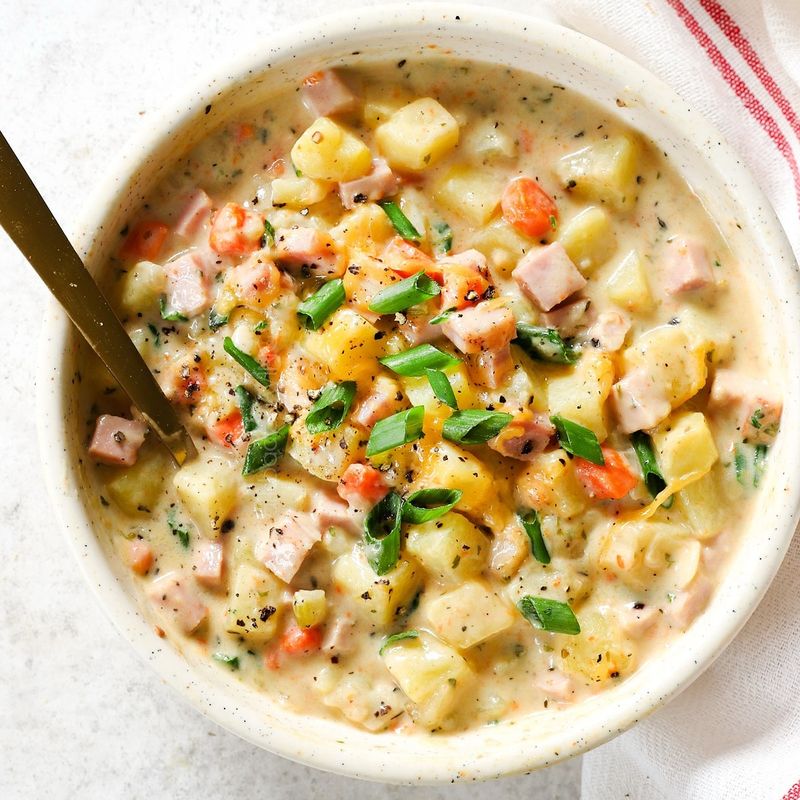
A pot of potato soup could stretch for days, feeding hungry families on mere pennies. Made simply with potatoes, onions, water, and perhaps a splash of milk when available, this meal warmed bellies during cold months.
Families might add a bit of bacon grease for flavor when meat itself was unaffordable. The starchy potatoes filled growing children up quickly, making this an economical choice for large families.
4. Bread and Milk

When cupboards were nearly bare, bread soaked in milk with a sprinkle of sugar became an emergency meal. Children sometimes saw it as a treat, unaware it signaled financial distress.
This dish, sometimes called milk toast when warmed, provided calcium and carbohydrates when protein sources weren’t affordable. Some families added cinnamon or vanilla if available, transforming necessity into something special.
During particularly difficult times, families might substitute powdered milk mixed with water. The soft, sweet mixture filled stomachs and provided comfort when little else was available.
5. Bologna Sandwiches
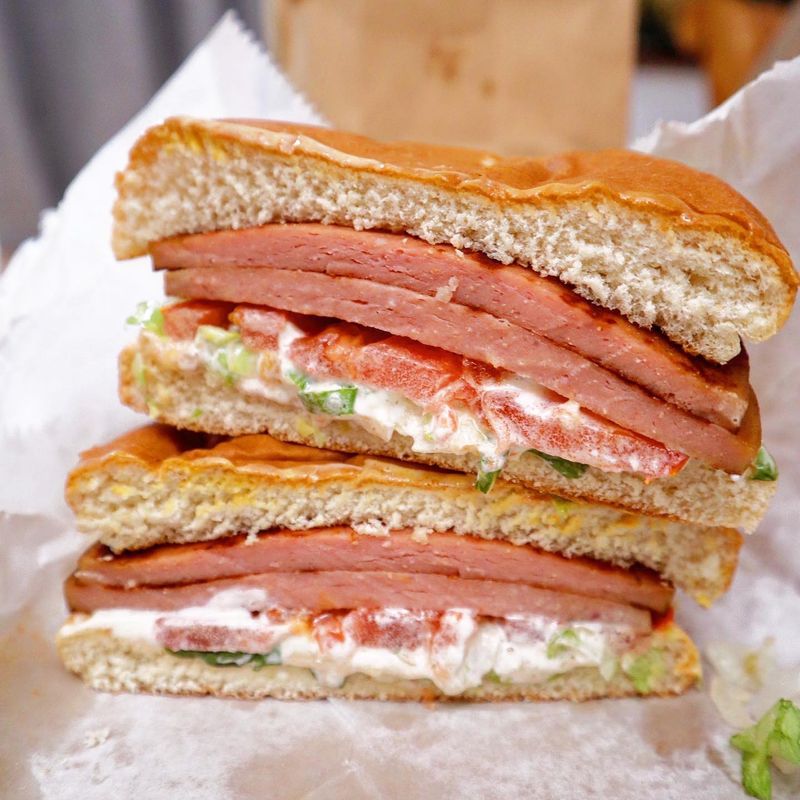
The quintessential working-class lunch, bologna sandwiches traveled to school in paper bags and construction sites in lunch pails. At roughly 15 cents for a package, bologna provided protein when meat was otherwise unaffordable.
Mothers stretched this processed meat by cutting it thin or using half-slices on white bread with mayonnaise. Some families couldn’t afford condiments, sending children to school with dry bologna between bread.
Weekend variations sometimes included fried bologna, which curled up in the pan to create a bowl shape that might hold an egg if the family budget allowed such luxury.
6. Cornmeal Mush

Cornmeal stirred into boiling water created a porridge that could be eaten three different ways throughout the day. Morning saw it served hot with a bit of sugar or molasses as breakfast.
Leftovers cooled and solidified, allowing slices to be fried in bacon grease for lunch. By dinner, any remaining portions might be crumbled into soup as a thickener or served with beans.
This versatile staple cost just pennies per serving and filled hungry stomachs with warming carbohydrates. Rural families often grew and ground their own corn, making this truly a meal from almost nothing.
7. Ketchup Spaghetti

When proper pasta sauce was beyond the budget, families created makeshift versions using ketchup thinned with water. This simple sauce, sometimes enhanced with a sprinkle of dried herbs or a dash of sugar, coated pasta to create a filling meal.
Children rarely complained about the sweet, tangy flavor that masked the absence of meat or vegetables. The bright red color made the dish seem festive despite its humble origins.
Many families served this with day-old bread, sometimes toasted with a bit of margarine and garlic salt to create a semblance of garlic bread. This meal could feed a family of four for under 25 cents.
8. Mayonnaise Sandwiches

When protein sources were unaffordable, children sometimes carried sandwiches containing nothing but mayonnaise to school. The fat content provided some energy, while the bread delivered necessary carbohydrates.
Parents often disguised the absence of meat or cheese by cutting these sandwiches into special shapes. Some added a sprinkle of sugar or even food coloring to the mayonnaise to make the sandwich seem like a treat rather than a necessity.
For many families, these sandwiches represented the last days before payday, when pantries were at their barest. Children eating them learned early about economic hardship without necessarily understanding it.
9. Ham Hocks and Beans
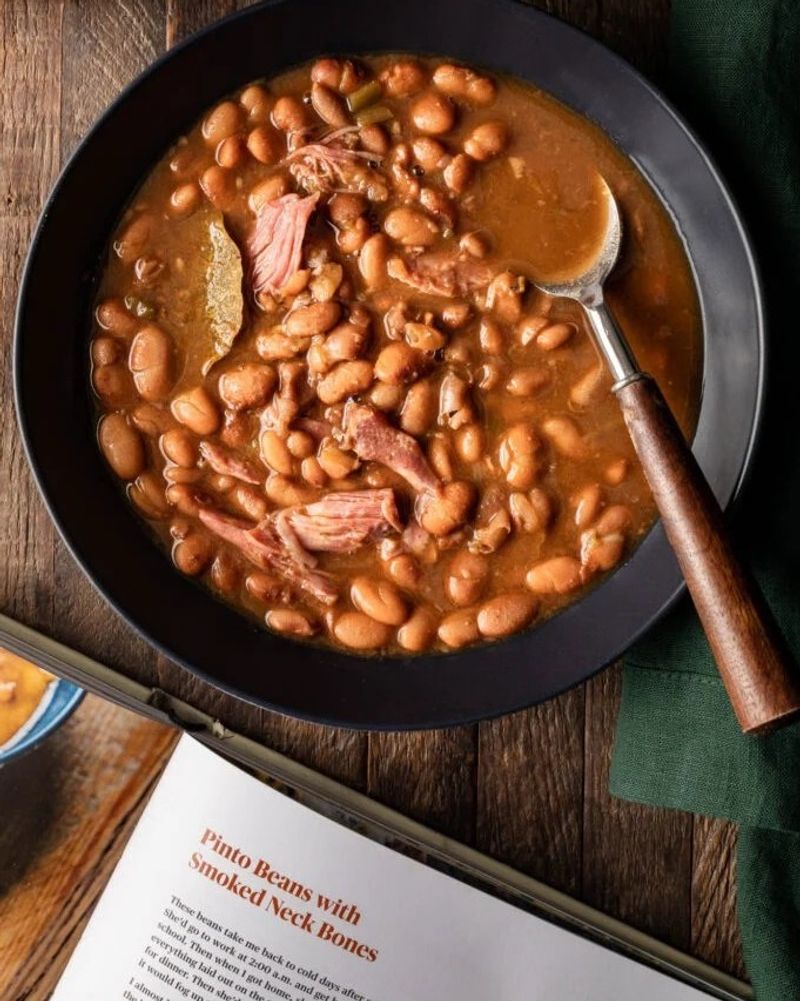
Smoked ham hocks – the inexpensive joint where pig’s feet meet the leg – flavored pots of beans that simmered all day. This Southern staple migrated north with families seeking work, bringing comfort food traditions with them.
The long cooking process transformed tough meat into tender morsels while creating a rich broth. Mothers would carefully pick the small amount of meat from the bones to distribute equally among family members.
Served with cornbread made from scratch, this meal could feed large families for several days. The protein and fiber combination provided substantial nutrition when fresh produce was scarce or unaffordable.
10. Rice and Beans
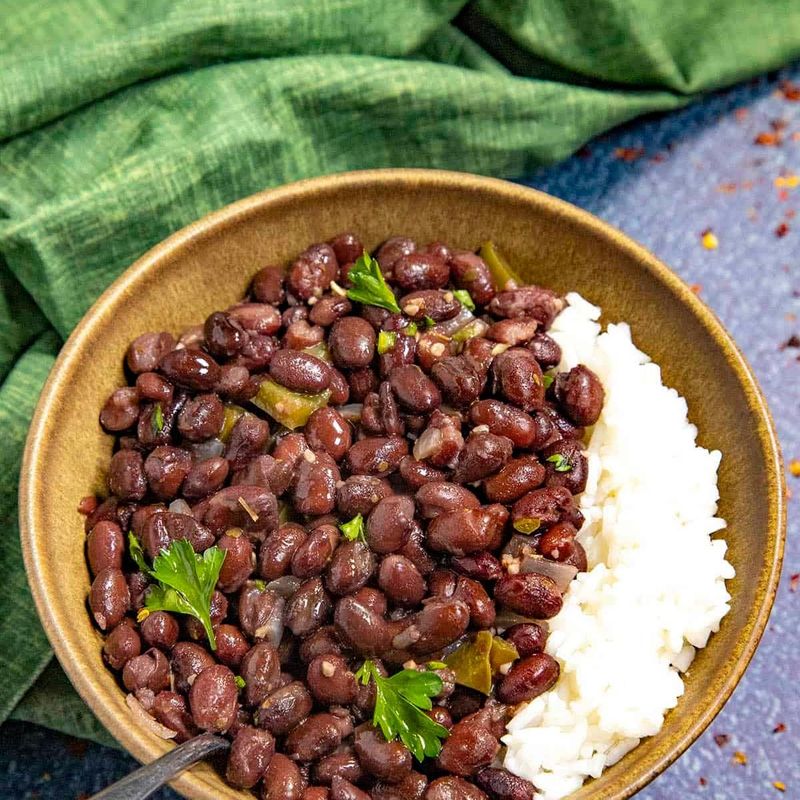
A staple for many poor families in the 1960s, rice and beans provided a cheap and nutritious meal. Combining these two ingredients not only offered a complete protein but also filled empty stomachs without emptying wallets.
Rice was often bought in bulk, making it an economical choice. Beans, too, were readily available and could be seasoned to taste, offering versatility in an otherwise limited diet.
This dish stands as a testament to the ingenuity and adaptability of families who could transform basic ingredients into something satisfying.
11. Cabbage Soup
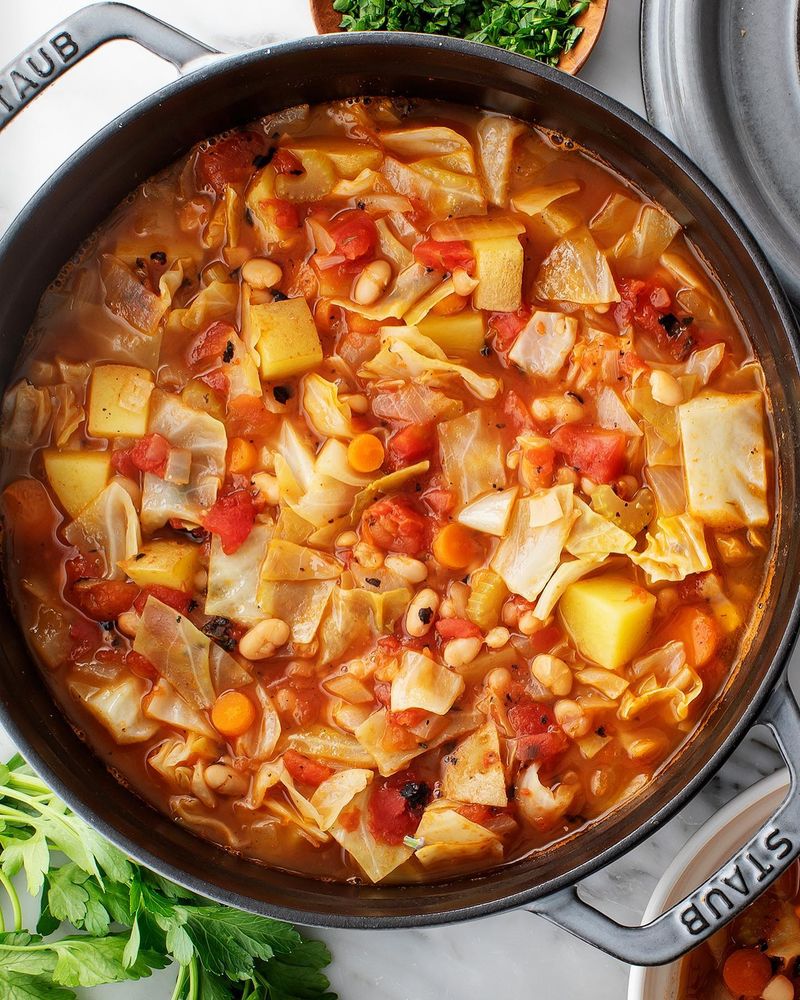
Cabbage soup was a go-to for those tight on budget and time. The hearty and warming nature of this soup made it a favorite during cold months.
Cabbage, being inexpensive and filling, was perfect for creating a big pot that could last for days. Often, it was combined with leftover vegetables and seasoned with whatever was at hand.
This meal reflects a time when resourcefulness was key, turning surplus and inexpensive produce into a nourishing staple.
12. Gravy and Biscuits
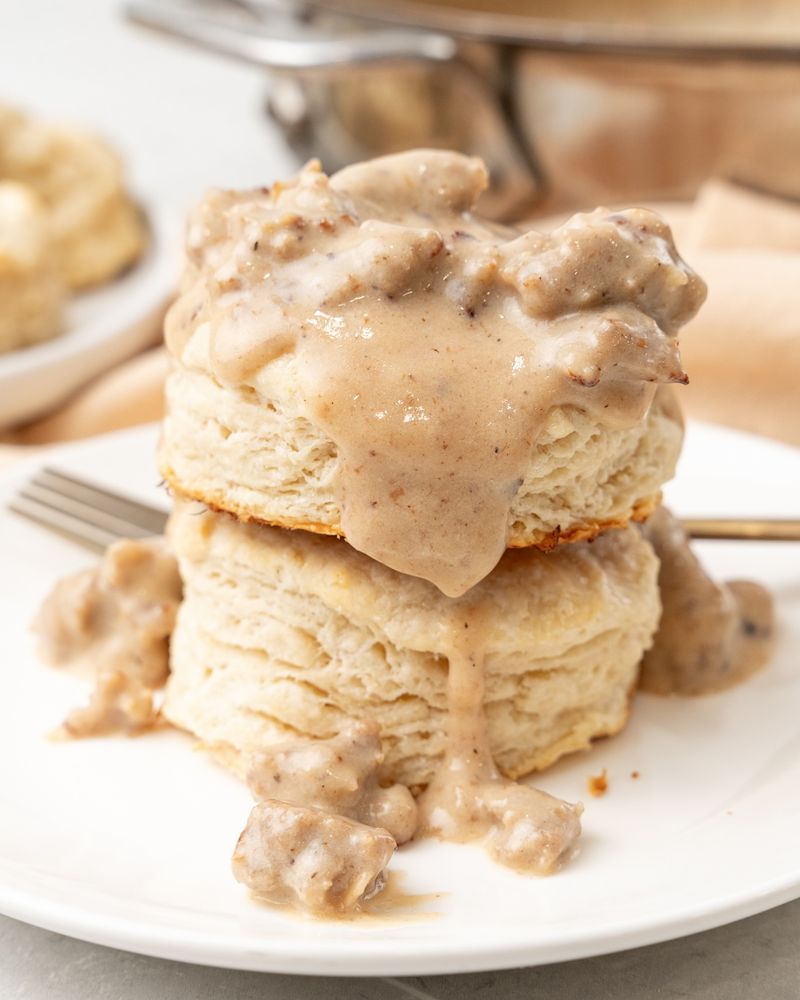
Flour, fat, and water transformed into white gravy that covered homemade biscuits when meat wasn’t affordable. This Southern comfort food became a nationwide staple for families stretching pennies into meals.
The thick, creamy gravy created a filling sensation despite minimal ingredients. Mothers would sometimes add the smallest bit of browned sausage or bacon grease for flavor when possible.
Biscuits required just flour, lard or shortening, and a bit of milk or water. Children filled up quickly on this carbohydrate-heavy meal that cost mere cents to prepare but delivered the comfort of hot food during difficult times.
13. Macaroni and Cheese
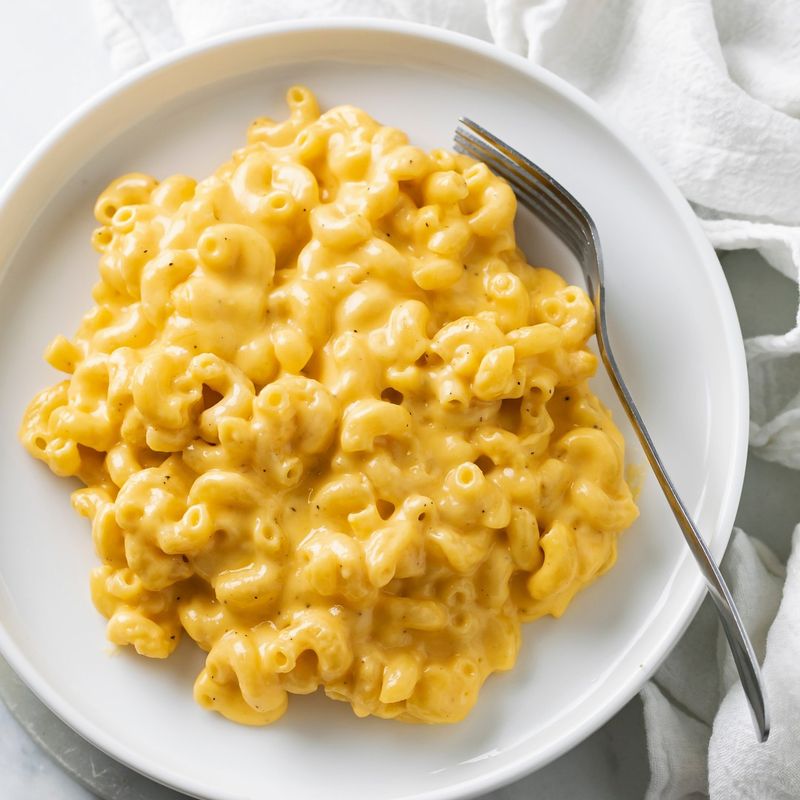
Macaroni and cheese, a comfort food then as it is now, was a simple delight for families trying to stretch a dollar. Boxed pasta and processed cheese were both affordable and accessible.
This dish reminded families of home and offered a sense of warmth and comfort. The crispy baked top was often a special treat.
14. Liver and Onions
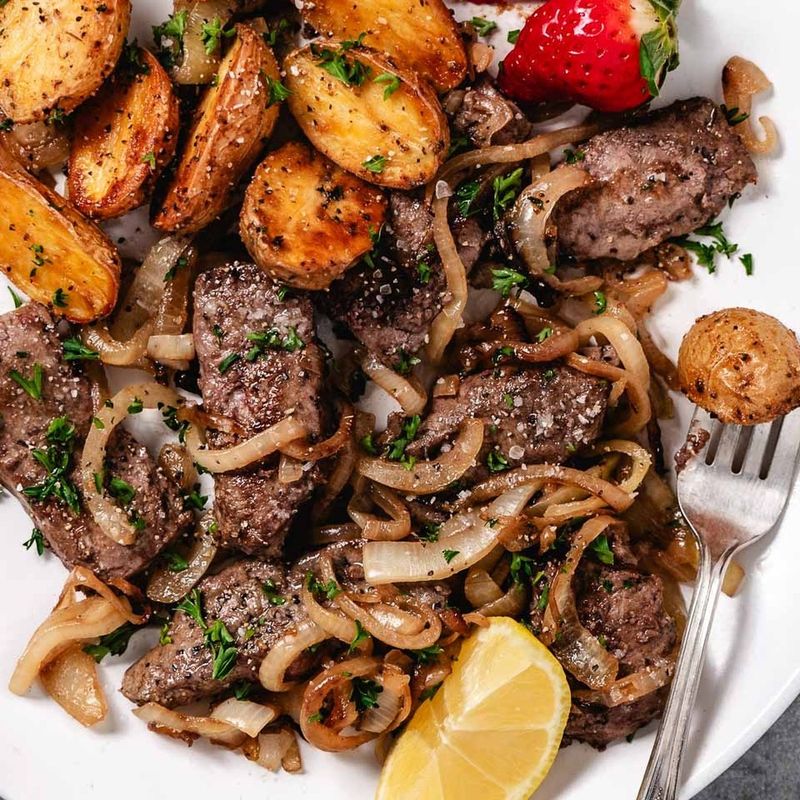
Known for its strong flavor, liver and onions was an affordable way for families to introduce protein into their diet. The dish’s robust taste was often tempered with caramelized onions, adding a touch of sweetness.
Despite its polarizing taste, it was a nutritious option packed with iron and vitamins. It was a dish that one either loved or loathed, making it a memorable part of family meals.
Fun fact: This dish was once so popular that it became a common offering in diners and small eateries across America during the ’60s.
15. Potato Pancakes

Leftover mashed potatoes mixed with a bit of flour and an egg if available created filling pancakes that transformed yesterday’s dinner into today’s meal. Fried in whatever fat was on hand, these crispy cakes stretched ingredients to their maximum potential.
Families without leftovers would grate raw potatoes, squeezing out excess moisture before mixing. The starchy mixture required minimal ingredients while filling hungry stomachs.
Some households served these with homemade applesauce in autumn or with a bit of ketchup year-round. This adaptable recipe crossed ethnic boundaries, appearing on tables in Jewish, Polish, Irish, and German-American homes experiencing financial hardship.
16. Hot Dog and Bean Casserole
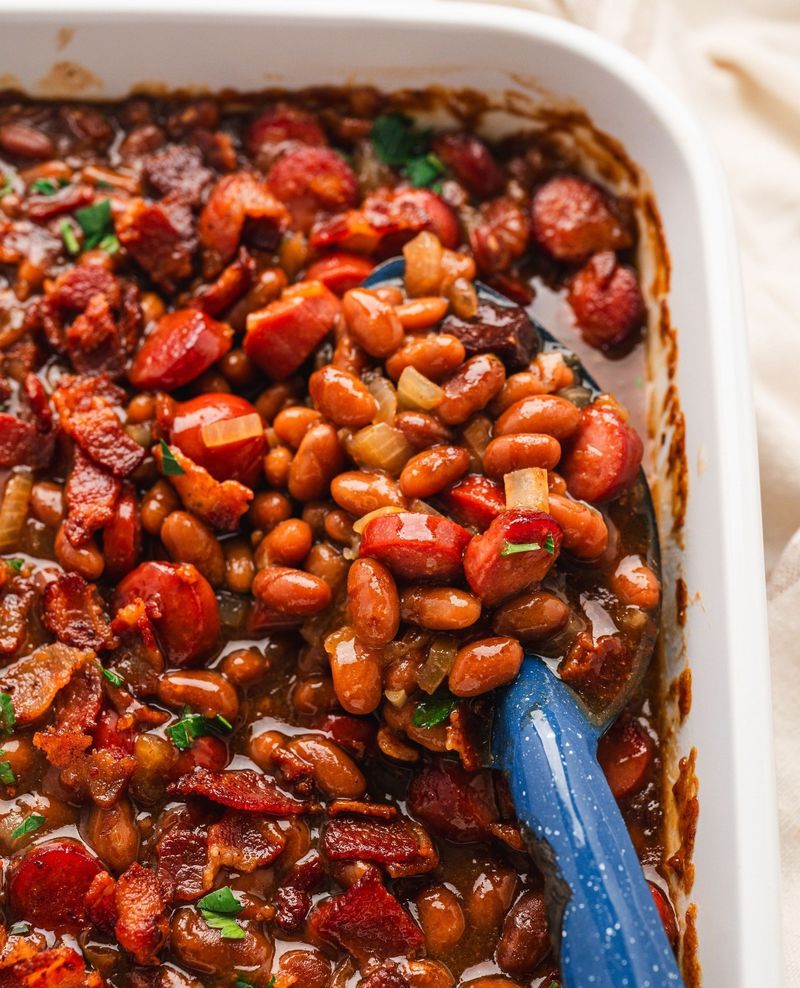
A single package of hot dogs sliced thin and mixed with several cans of pork and beans created a protein-rich casserole that could feed large families. This one-dish meal became a staple for working mothers who needed affordable, filling options after long workdays.
Some families added a bit of brown sugar or molasses for sweetness, or a squirt of mustard for tang. The dish baked until bubbly, creating a comfort food that children requested without realizing its economical origins.
Often served with white bread to stretch the meal further, this simple casserole represented making do with processed foods when fresh options were financially out of reach.
17. Skillet Cornbread

In many households, skillet cornbread was a staple dish, providing a savory satisfaction with its slightly crumbly texture and buttery flavor. Some families added a touch of sugar for a sweeter version, while others stuck to the traditional savory taste.
Cornbread could be served alongside soups and stews, or eaten on its own as a quick snack. Its versatility and ease of preparation made it a beloved choice.
Leave a comment